-
Orchid Care guide – How to look after Phalaenopsis moth orchids
 Lee Burkhill: Award Winning Designer & BBC 1's Garden Rescue Presenters Official Blog
Lee Burkhill: Award Winning Designer & BBC 1's Garden Rescue Presenters Official Blog

This Orchid care guide will provide you with all the detail you need to keep your orchids flowering for months and stop the unsightly yellow or black leaf problems. Orchids are now propagated on an industrial level in factories around the world and have been bred to be super resilient but whilst easy to get hold of they are still tropical plants.
Orchids require a careful level of maintenance to try and mimic their natural conditions. That said once you have the basics in hand, they are ridiculously easy to look after and I guarantee if you have success with one, you'll be buying them for all over your house!
Orchids / Phalaenopsis are come from the tropics and live in shaded humid forests. They are epiphyte plants meaning they live out of the ground, though some orchid species are ground-dwelling, attaching themselves to trees, rocks or tree canopies. They are solely reliant on humidity, rainfall and residual moisture to get their nutrient and water requirements.
The rainforest and tropics are a lush, humid and nutrient-rich environment due to all the organic matter and bacteria that builds upon the forest floor. When looking after a house orchid thinking back to these conditions will help you easily care for your orchid.

I was lucky enough to recently visit the orchid garden in Singapore which is the world largest collection of orchids. They are displayed in their natural habitat and the display is simply stunning. It's definitely worth a visit if you're visiting Singapore. They use horse hair to bind the roots of the orchids in some of the displays, this is for neatness and also because horse hair allows air and moisture to pass through the roots without them getting water logged. The dark brown colour blends in seamlessly with the trees.
It's usually recommended to water an orchid every 5-12 days but Garden Ninja has a little rhyme that helps you with watering frequency. Checking the colour of the roots can signify when your moth orchid should be watered. Grey roots indicate they require water whereas green roots show your orchid is hydrated.
If it's Green it's serene, if it's grey, water away!
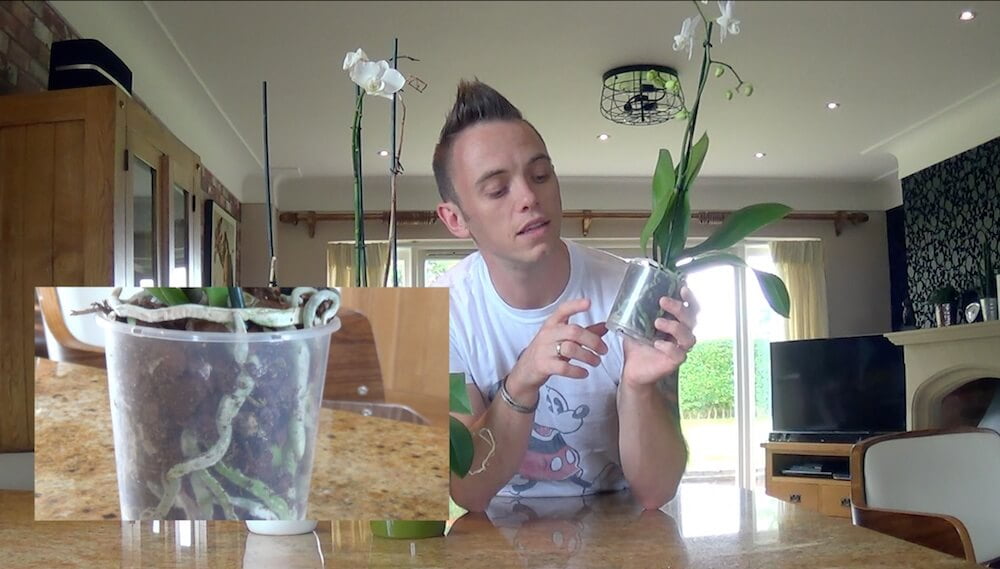
Orchids absolutely hate to be left sitting in water. Letting a moth orchid sit in water will result in one thing; root rot and death. Given that orchids live in tree canopies, you need to mimic this system in the watering method. There are two ways to water orchids that I have used frequently with success.
The flush method requires you to pour water through the orchids free-draining pot and bark root media to recreate the tropical rain it would experience in the wild. Tepid water is best and you may want to mix in your liquid feed into it beforehand, see the feeding orchid guide below. Do this for 30-60 seconds every 5-12 days dependant on how warm your house is.
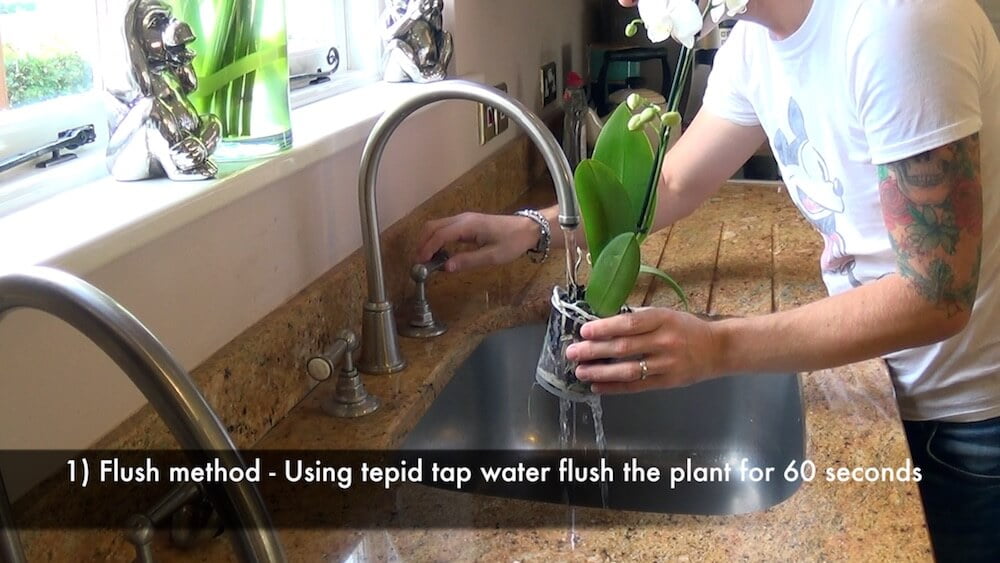
This is my preferred method as it requires less frequent watering of your orchids and gives a more thorough soak, similar to a tropical downpour. Fill its container with water and leave for 5 mins, then drain thoroughly I usually do this every 10 -14 days.
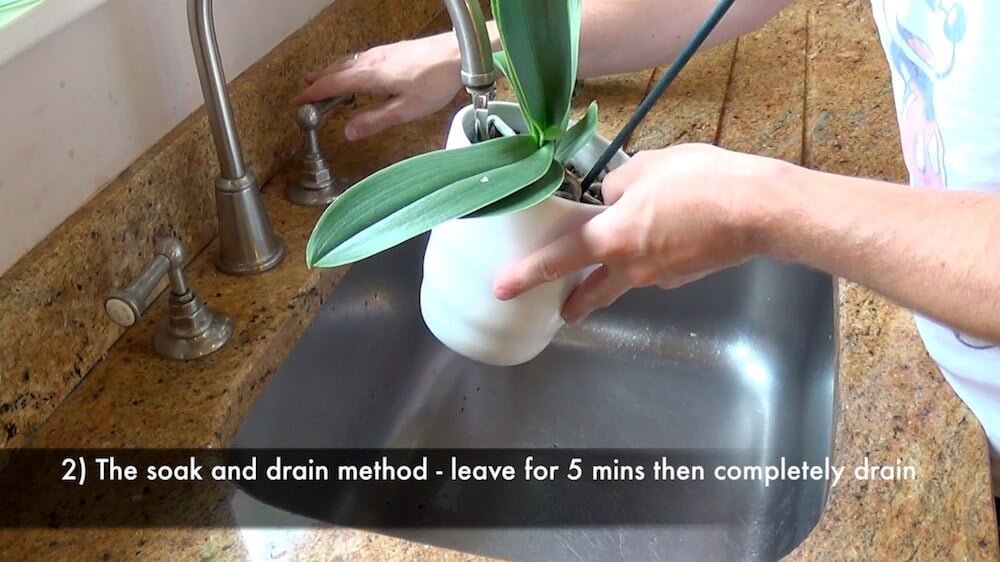
Pruning orchids is really simple, and most people seem to be pretty reluctant to prune any plant! See my guide here on pruning in general. However, with orchids, the rule is that as soon as it has finished flowering, snip the green stem back to the next node. This is a section where another lateral shoot may appear.
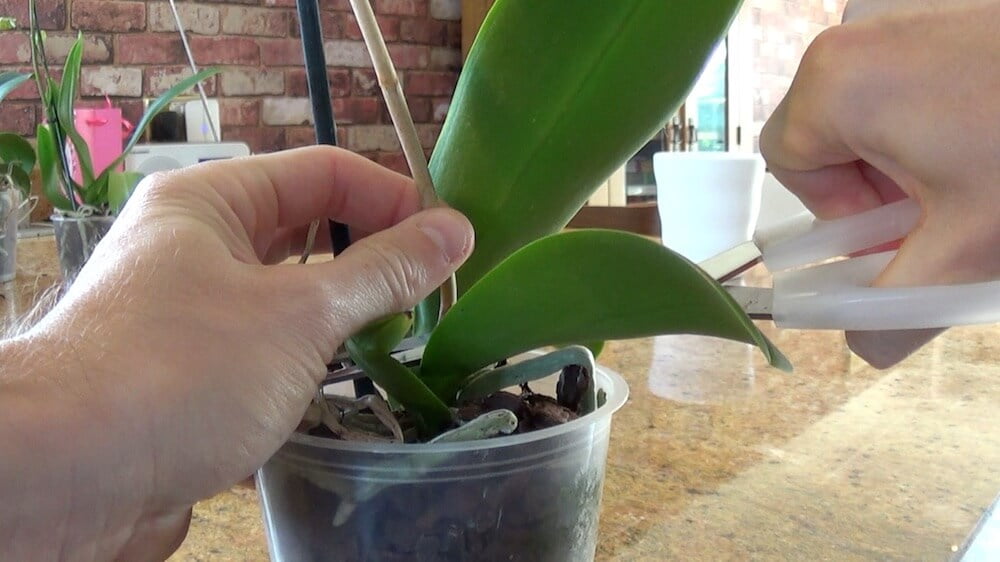
Cut the stem back to the next node or back to base if it's dried up.
Most people let the stem completely dry up and die back. Which is fine. If so, snip this off at the base to encourage the orchid to send out another stem. Damaged leaves, dried-up aerial roots (the ones which project out of the pot) or damage can all be removed by snipping back close to the plant or back to fresh material.
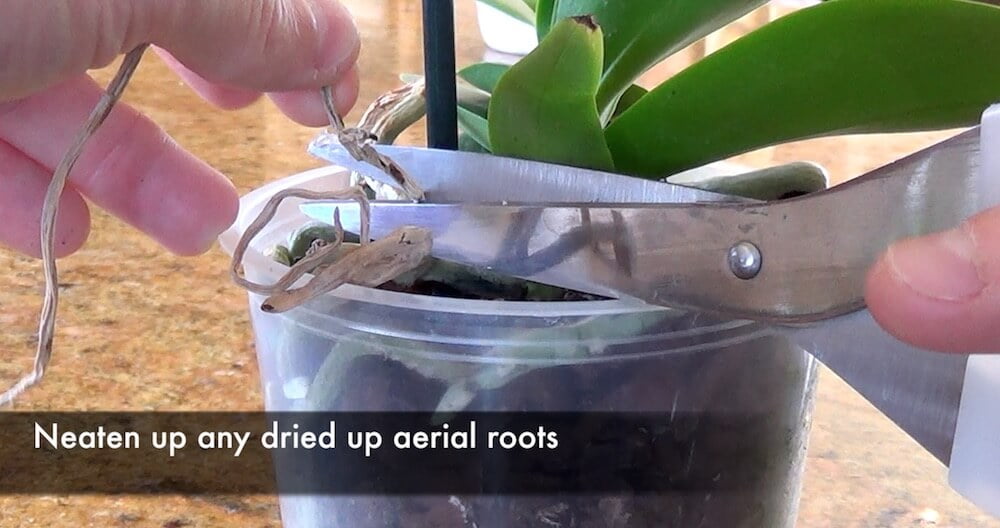
Orchids don't require high amounts of nutrients to flower and grow. They do need higher than usual levels of Nitrogen compared to other house plants. This is because the orchid relies heavily on its fleshy green leaves, with nitrogen helps produce, to photosynthesize and create energy.
The second reason is that the bark in which most Phalaenopsis are planted in uses nitrogen as it slowly decomposes. It robs nitrogen from the orchid, so a high Nitrogen feed is preferred to combat this. Specialist liquid orchid feed is best and once a month is an ideal frequency when watering.
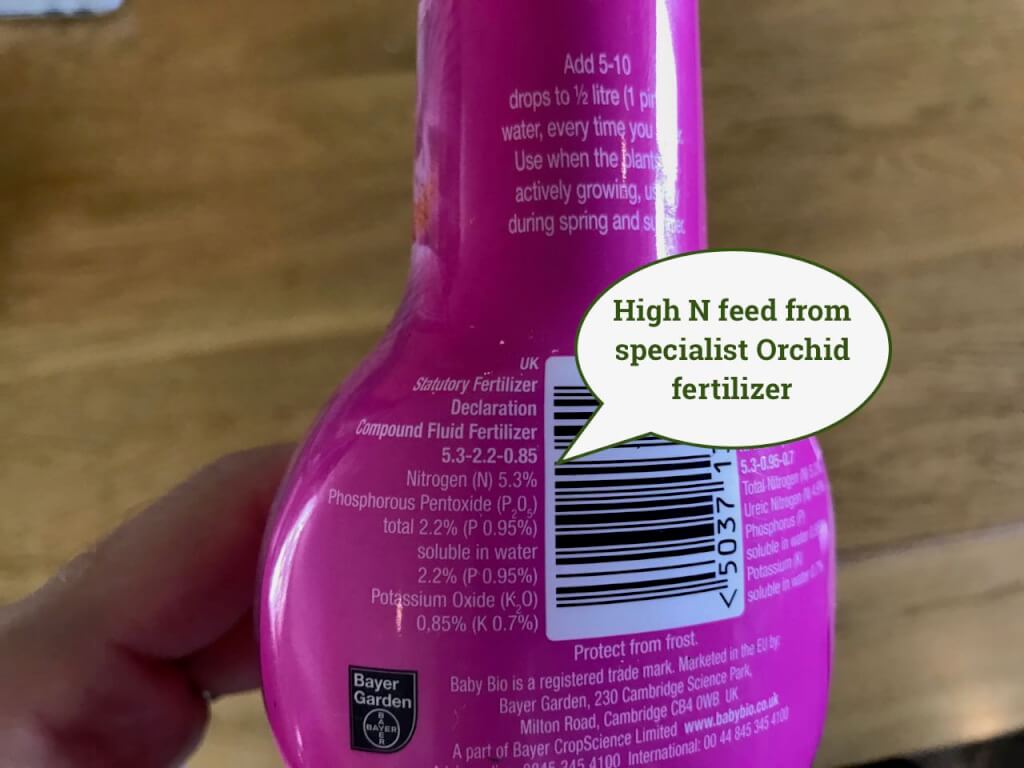
Orchids hate direct bright sunlight. This scorches them and stresses them, leading to black necrose leaves and a failure to flower. Again looking at their natural habitat they like indirect or diffused light. Privacy glass on a North facing window is ideal. If not, a shelf or table just out of direct sunlight is ideal. Have a play about to see where your orchid feels happiest!
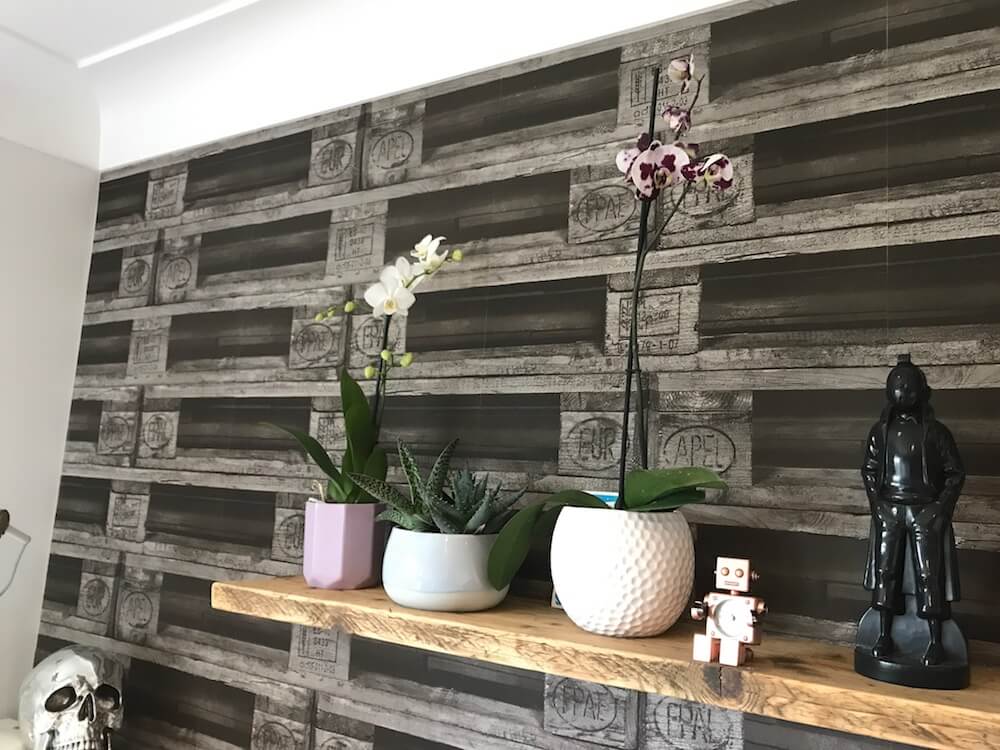
A shelf out of direct sunlight is ideal for positioning orchids.
Repotting orchids is pretty much fool proof and should be done every 2 years, though sometimes you can get away with longer! Check the root system, remove any dead brown or mushy roots and stems. Then using orchid compost, which is just bark, repot the orchid repositioning the crown (the fleshy green leaves and core) above the bark level. You can use a wooden cane to train the flowering should up and carefully tie it in with rubber ties.
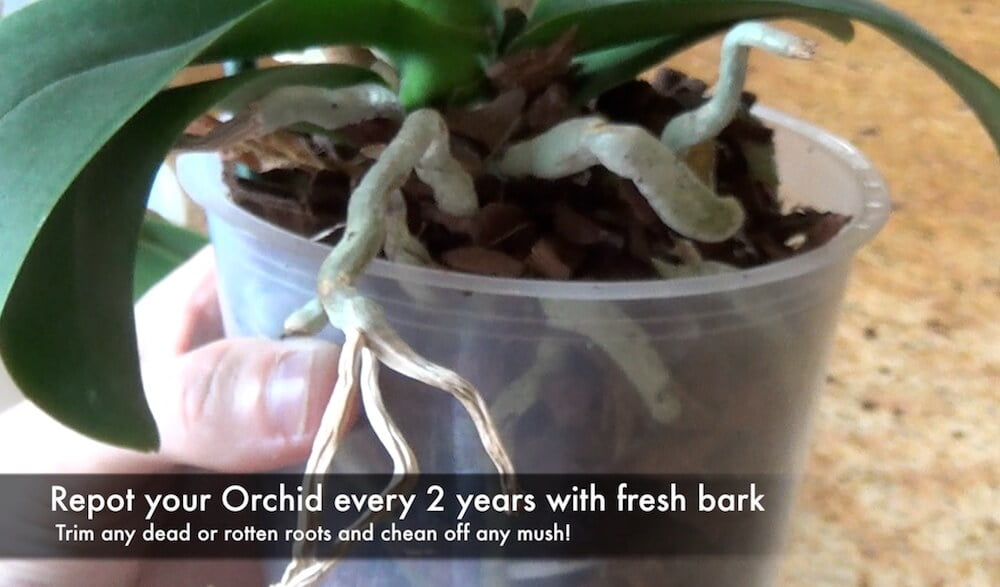
Orchids are amazingly resilient and beautiful house plants. I don't think the trend for them will slow down anytime soon. Have you had success with orchids or even have any pictures?
Have you got incredible Orchids at home? If so why not Tweet, Facebook or Instagram me with your pictures! You can also follow me on Youtube where I’ve got plenty of garden guide vlogs.


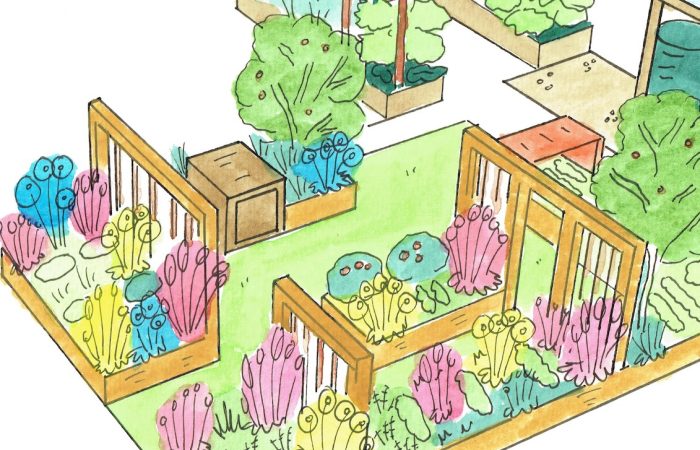

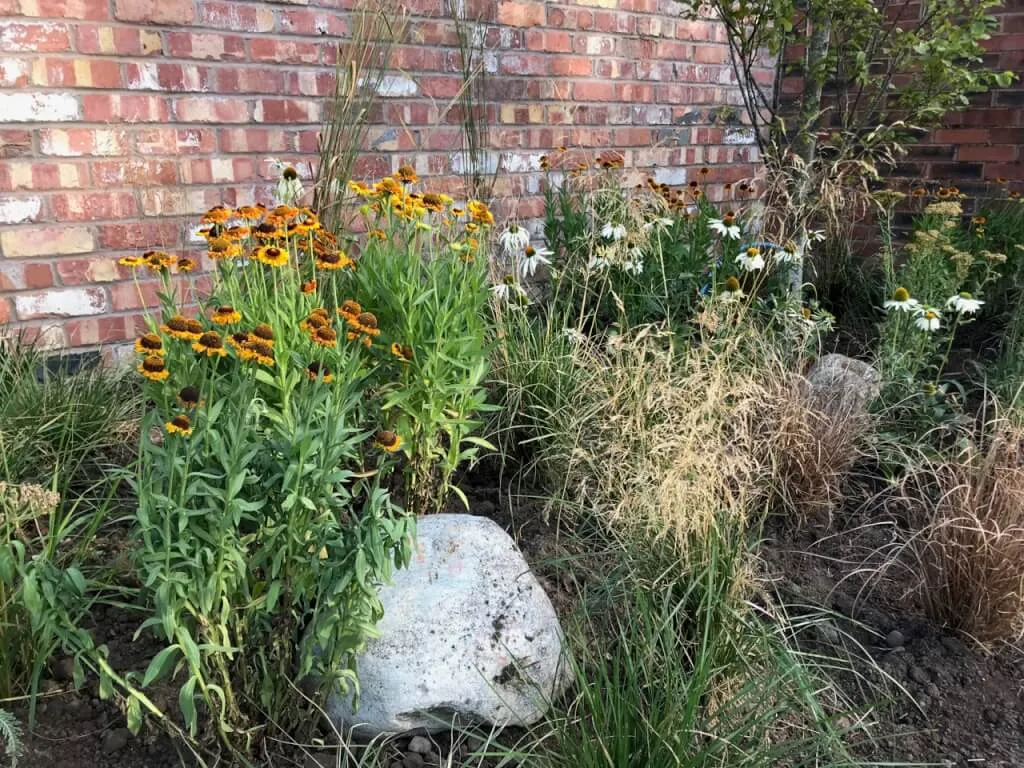
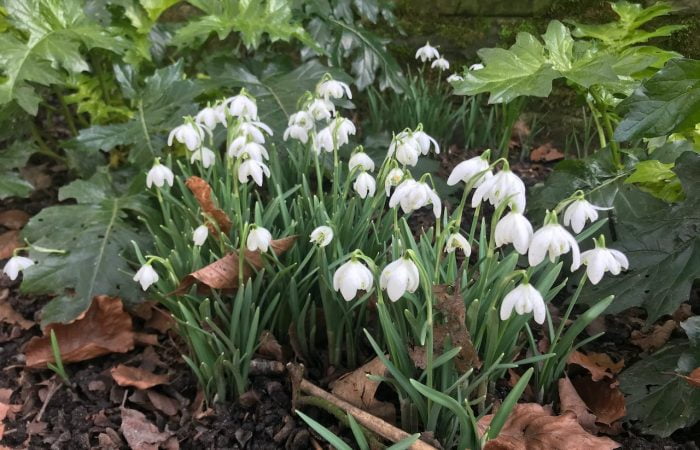

JOIN THE NINJAS

Be the first in line for new Guides, Discount codes and Offers